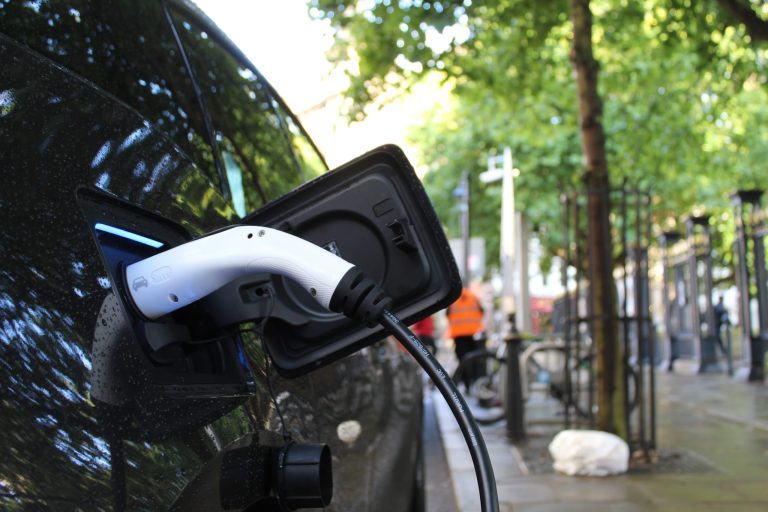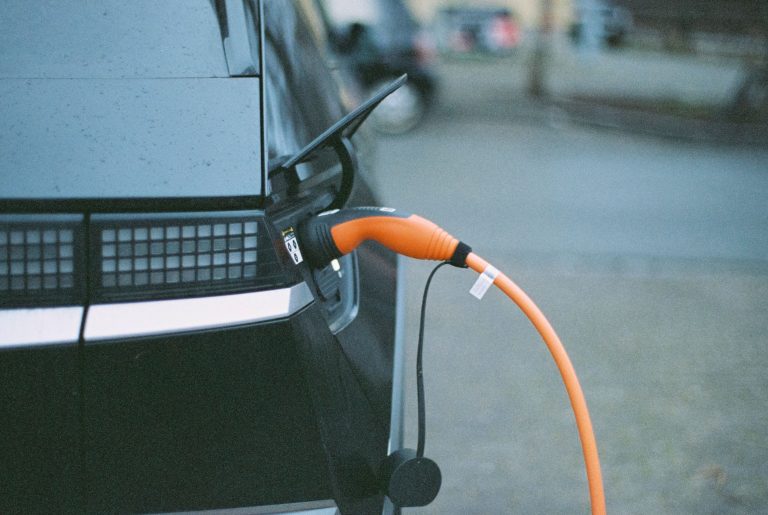In a world increasingly aware of the importance of sustainability and reducing carbon emissions, electric mobility has become one of the main solutions to tackle environmental and energy challenges. In this context, Spain has been working hard on the expansion of its public-access electric charging infrastructure to meet the growing demand for electric vehicles.
In this article, we will explore the current state of these infrastructures, the ZeemGO solution to find charging points, improvements in the infrastructure network, the future of electric charging in Spain, and the key conclusions.

The Current State of Charging Infrastructure in Spain
Currently, Spain has an expanding network of public-access electric charging points. According to recent data, the country has experienced consistent growth in the installation of charging stations in recent years. It is estimated that there are more than 18,000 charging points available throughout the country, making electric charging accessible for electric vehicle owners.
Data and Statistics on Public Access Charging Points in Spain

Growth and Expansion Plans to Meet Increasing Demand
To address the growing demand for electric vehicles, Spain has established ambitious plans for the growth and expansion of its electric charging infrastructure. This includes the installation of a significant number of new charging points in urban and rural areas, as well as on major highways and access roads. These efforts are aimed at making electric charging more convenient and accessible for all drivers in the country.
ZeemGO: The Solution for Finding Charging Points
1. Features and Functionalities of ZeemGO
One of the most useful tools for those driving electric vehicles in Spain is ZeemGO, an application designed to locate charging points in real-time. ZeemGO offers a range of features and functionalities, such as interactive maps showing the charging points’ locations, information about station quality, and deals in the sustainable industry.
2. How to Use the App to Locate Charging Points in Real-Time
Using ZeemGO is simple and convenient. After downloading the application on your mobile device, simply enter your current location or destination, and the app will display available charging points along your route. This enables drivers to easily plan their journeys, alleviating concerns about running out of power.
3. Benefits of Using ZeemGO to Enhance the Electric Charging Experience
ZeemGO not only makes finding charging points easier but also contributes to enhancing the overall electric charging experience based on verified reviews from other drivers. By planning routes and knowing the availability of charging points, drivers can reduce the stress associated with charging and enjoy smoother and more efficient trips.

Improvements in the Charging Infrastructure Network
1. Initiatives and Projects to Expand and Enhance the Charging Point Network in Spain
The Spanish government, in collaboration with private companies, has launched a series of initiatives and projects aimed at expanding and improving the charging point network throughout the country. This includes the installation of faster and more efficient chargers, as well as the implementation of advanced technologies for more effective network management.
Notable Projects:
- MOVES Plan: The Spanish Government’s Alternative Mobility Support Plan (MOVES) provides grants for the acquisition of electric vehicles and the installation of charging points. This plan has been renewed several times to promote electric mobility in the country.
- Incentive Program for Efficient Vehicles (PIVE): This program offers economic incentives for the purchase of electric vehicles and the installation of charging points.
- Electric Vehicle Infrastructure Plan: This plan aims to increase charging infrastructure on highways, urban areas, and public parking lots. It includes the installation of fast and ultra-fast chargers in strategic locations.
- Public-Private Collaborations: Various energy companies and gas station operators are collaborating with the government to install charging points at gas stations and other public locations.
- Iberdrola’s Fast Charging Network: Iberdrola is implementing a fast charging network for electric vehicles at key locations, including gas stations and shopping centers.
- Local Electromobility Projects: Some cities and regions are implementing pilot projects to create low-emission zones and improve charging infrastructure in urban areas.
- Private Company Programs: Major companies like Tesla and Repsol are installing charging stations at their establishments and partnering with other businesses to expand the charging point network.
- Home Charging Programs: Several companies offer solutions for installing charging points in private homes, facilitating overnight charging for electric vehicle owners.
- Support for Research and Development: Investments are being made in research and development to improve charging technology, including ultra-fast charging systems and wireless technologies.
- Sustainable Mobility Projects in Cities: Some cities are implementing comprehensive sustainable mobility projects that include expanding charging infrastructure and promoting shared electric vehicles.
These initiatives and projects are significantly contributing to the expansion and enhancement of the charging point network in Spain, thus facilitating the adoption of electric vehicles and promoting cleaner and more sustainable transportation.
2. Collaborations and Strategic Partnerships to Boost Electric Mobility
To accelerate the transition to electric mobility, Spain has fostered collaborations and strategic partnerships with car manufacturers, energy companies, and other key stakeholders. These partnerships are aimed at boosting investment in charging infrastructure and promoting the adoption of electric vehicles in the country.
A notable example is the IDAE, attached to the Ministry for Ecological Transition and Demographic Challenge, is a Spanish public corporate entity created in 1992. It plays a crucial role in promoting sustainable and efficient energy policies. Its focus is on transitioning to cleaner and renewable energy sources, as well as promoting energy efficiency across various sectors. This effort significantly contributes to reducing greenhouse gas emissions, mitigating climate change, and promoting sustainable development in the country.

Future of Electric Charging in Spain
1. Perspectives and Trends in the Expansion of Charging Infrastructures
The future of electric charging in Spain looks promising. The network of charging points is expected to continue growing steadily, making electric mobility even more accessible and convenient. Additionally, fast charging technology and smart infrastructure are anticipated to play a significant role in promoting the adoption of electric vehicles.
2. Governmental Drive and Support to Encourage Electric Vehicle Adoption
The Spanish government has shown a strong commitment to promoting electric mobility through tax incentives and support programs. These efforts are designed to make the acquisition and use of electric vehicles more affordable and appealing to consumers.
In Spain, the government and some autonomous communities offer various aids and incentives to encourage electric vehicle adoption. Here are some of the programs and aids available, some mentioned previously:
- MOVES Plan (Alternative Mobility and Efficient Vehicles): This is an incentive program for efficient and sustainable mobility. It provides grants for the purchase of electric vehicles and the installation of charging points, as well as for the renewal of public and freight transport fleets.
- PIVE Plan: Through this program, discounts are offered for the purchase of electric and hybrid vehicles, both for individuals and companies, when an old vehicle is scrapped.
- Local Incentives: Some cities and regions offer additional incentives, such as discounts on local taxes, for electric vehicle owners.
- Toll and Parking Discounts: Electric vehicles may receive discounts or exemptions from toll and parking fees in certain areas.
- Exemption from Registration Taxes: Electric vehicles are exempt from registration taxes in Spain.
- Aids for Home Charging Point Installation: Some autonomous communities offer grants for the installation of charging points in private homes.
- Vehicle Circulation Tax Discounts: Some municipalities offer discounts on vehicle circulation tax for electric vehicles.
- Subsidies for Company Fleets: Companies acquiring electric vehicles for their fleets can benefit from subsidies and tax deductions.
- Electric Carsharing Programs: Some cities have electric carsharing programs with reduced rates for electric vehicle users.
- Electric Vehicle Test Programs: Some cities offer programs for citizens to test electric vehicles for free or at reduced rates for a period of time.
It’s important to note that aids and incentives may vary by autonomous community in Spain, so it is recommended to check local policies and regulations for accurate information about available aids in a specific region.

Conclusions
In summary, Spain has made significant strides in expanding its public-access electric charging infrastructure. With a growing number of charging points, government initiatives, and the assistance of tools like ZeemGO, electric charging has become more convenient and affordable than ever. As the country moves towards a more sustainable future, electric mobility will play a pivotal role in reducing carbon emissions and promoting a cleaner environment. Feel free to download ZeemGO and make the most of the electric charging experience in Spain!
The public-access electric charging infrastructure in Europe has also experienced substantial growth in recent years, driven by the increasing adoption of electric vehicles and efforts by governments and businesses to promote sustainable mobility. Below are some key aspects of public-access electric charging infrastructure in Europe:
- Rapid Expansion: Europe has witnessed rapid expansion of the public charging network. Thousands of charging stations have been established in urban areas, highways, and public parking lots.
- Charger Types: Charging stations vary in their capacity and charging speed. This includes slow chargers (3 to 7 kW), semi-fast chargers (22 to 43 kW), and fast chargers (50 kW and above), including ultra-fast chargers capable of charging vehicles at powers up to 350 kW.
- Charging Standards: Charging standards in Europe include CCS (Combined Charging System), CHAdeMO, and Type 2 (Mennekes). Most charging stations are equipped with multiple connectors to accommodate a variety of vehicles.
- Highway Charging: Fast charging networks have been implemented along highways to enable long-distance travel for electric vehicles.
- Collaborations Across Countries: Collaborations exist between European countries to facilitate interoperability of charging stations and ensure a seamless charging experience for users traveling across different countries.
- Investment Plans: Energy companies, car manufacturers, and governments are investing significantly in expanding charging infrastructure, both in urban and rural areas.
- Apps and Platforms: There are online applications and platforms that allow electric vehicle drivers to find charging stations, check availability, and in some cases, make payments through mobile apps.
- Home and Workplace Charging: In addition to public charging stations, many electric vehicle drivers choose to install chargers in their homes or workplaces for convenient and accessible charging.
- Government Incentives: Some European countries offer incentives and subsidies for the installation of electric vehicle chargers, both for individuals and businesses.
- Green Charging: Initiatives are being developed to use renewable energy in charging infrastructure, ensuring that electric vehicle charging becomes increasingly sustainable.
These improvements and efforts in public charging infrastructure are significantly contributing to the acceptance and adoption of electric vehicles in Europe, making electric mobility more practical and convenient for drivers.






